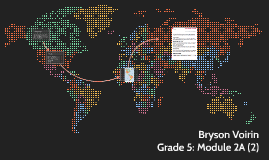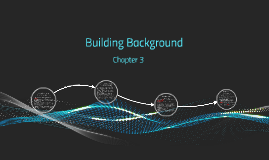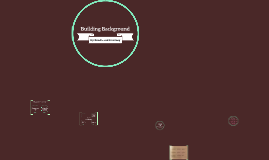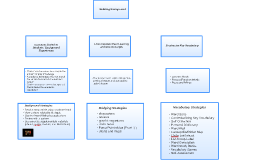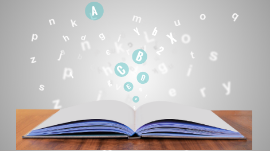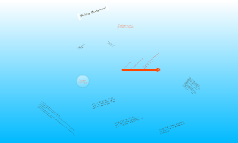Building Background
Transcript: Building Background Knowledge Background knowledge is the ‘backbone’ of comprehension. When you begin to read, you bring a distinct collection of experiences into the text. In your lifetime, you have been exposed to many sights, sounds, smells, tastes & feelings--sometimes through actual experiences and other times through television, movies, radio or the Internet. As you read, you think about what you already know about the subject or topic you are reading. Something that you know very little about, building a space station, for example, may have very technical terms and directions that you have little or no experience with. It may be difficult for you to stay connected with the reading because you have no background knowledge to connect with the new material. Something that you know a lot about, like learning how to ride a bike, would give you a strong connection to a story about a teenager who is trying to help her younger brother how to ride a bike. You might be thinking about the person who taught you how to ride and the many spills you took before finally riding on your own without wiping out! When you use background knowledge to help make a picture or movie in your mind as you read, you are visualizing. As I read the Harry Potter stories, I can read the words on the page while at the same time ‘play a movie’ in my head, picturing the characters and actions in the story. This helps me to understand what is happening. When you read informational text, it may be more difficult to make a picture in your head because there may not be descriptions of action and characters like you would find in a fictional text. Instead of visualizing or playing a movie in your head, you can think of everything you know about a particular topic, organizing your ideas in a graphic organizer. Before reading an informational text about the International Space Station, for example, create a web with ISS (International Space Station) in the middle. Draw lines sticking out from the middle and add any information you already know about the ISS - located in outer space; astronauts living and working there; place to do experiments on the effects of living without gravity; astronauts from US and other countries land there to bring supplies and conduct experiments. You can adjust your web as you gain new information and find appropriate places to put the new material. A good reader starts a new reading selection by scanning for key words in the title or first few paragraphs and immediately thinking of his or her own experience related to the topic. The more you know about a topic, the easier it will be to make connections. CATAPULT - for building background before reading fiction.... Covers (front and back) - What does the front cover show us about what we might visualize in the story? What does the back cover tell us about the story (the words, pictures or both)? Author - Who at is the author’s background? Has he or she written any other stories that might be like this? What were they about? Are the same characters in this story as in the others? Title - What does the title lead us to predict about the story? Let’s hear some possible predictions. Audience - For whom was this story written? Old, young; male, female; city-dwelling, country-dwelling; past, present, or future readers? Page 1- Read page 1 and think about what the story might be about. Underlying message or purpose - With what we have thought about so far, what message or purpose might the author have for the readers? Look at visuals, maps, or sketches in the text - As we look through the story, what do the pictures, sketches, diagrams, or maps tell us? How will they add to our ability to visualize events and characters? Time, place, characters - From clues so far, what can we say about when the story takes place, where it takes place, and the characters? What can we guess might happen to the characters? THIEVES - for building background before reading nonfiction Title - What does the title tell us? Let's think of the possibilities. Headings - What do the headings tell us? They are the minititles of each section. What questions can we make from them that we think the section will answer? Let's also look at the table of contents, ask some questions, and make some predictions. Introduction - Read the chapter introduction if there is one and think about it. Read the first paragraph of normal chapter text as well. Everything I know - Jot down all the facts and ideas about the topic that you think will be helpful for understanding (quickwrite or mind/concept map!). Create some questions about your own knowledgew that you think the text might answer. Use the back of your paper, if needed. Visuals - Let's look at all the diagrams, charts, and pictures. Let's read the captions. Why did the author included them? Can we think of any questions about them? End-of-chapter material - Let's look at the end of the chapter to read any summaries (Don't ever forget to read the summary! It






